Jest widoczny na najwcześniejszym wizerunku miasta – obrazie z 1536. Wzmianki o nim znaleźć można w miejskim urbarzu, czyli dokumencie spisowym. A co ciekawe, w XVII i XVIII wieku, tuż obok ratusza mieściła się stacja pocztowa dla dyliżansów. Siedziba strzeleckich władz nader często nękana była przez żywioł ognia. Budynek i wieża stanęły w płomieniach między innymi w listopadzie roku pańskiego 1754, gdy w całym mieście szalał groźny pożar. Cztery lata później ratusz po tej tragedyji dźwignięto ze zniszczeń. Kolejny pożar zajął go w lipcu 1826 roku, a niespełna rok później, 18 czerwca 1827 roku, ogień strawił go całkowicie. Nowy ratusz wybudowano dopiero w latach 1844-46 według planów budowniczego Rocha. Kosztował on bagatela 43 tysiące talarów! Budynek nieco przebudowano w roku 1911. Niestety, jak większa część miasta, nie przetrwał on końca II wojny światowej… W styczniu 1945 roku opuszczający Strzelce Rosjanie spalili większość budynków, z tutejszym zamkiem i ratuszem włącznie. Ten ostatni, na który patrzycie - neoklasycystyczny, trzykondygnacyjny - odbudowano dopiero w latach 60-tych XX wieku, wzorując się na starych planach i rycinach. A nawiązujący do nazwy miasta strzelec ze spiżu stanął tu w 1929 r. Dziś mieszkańcom i turystom kojarzy się z piastowskimi korzeniami miasta. Po drugiej stronie placu zaś znajduje się pomnik poświęcony Ofiarom Wojen i Przemocy, zwany śląską pietą.
How it working
Aby posłuchać historii pomników w ramach projektu „Poznaj historię” należy wykonać kilka prostych czynności. Poniżej przedstawiamy krótką „instrukcję obsługi” - krok po kroku, tak aby w miarę prosto przedstawić Państwu sposób dotarcia do minisłuchowisk.
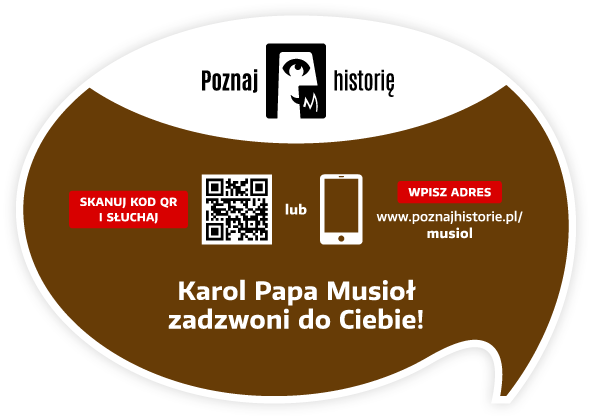
Trzeba mieć smartfon z aparatem fotograficznym. Obiektyw aparatu należy skierować w kierunku tabliczki informacyjnej znajdującej się tuż obok pomnika. Poniżej pokazujemy widok samej tabliczki oraz przykładowego jej umiejscowienia przy pomniku Karola Musioła w Opolu.
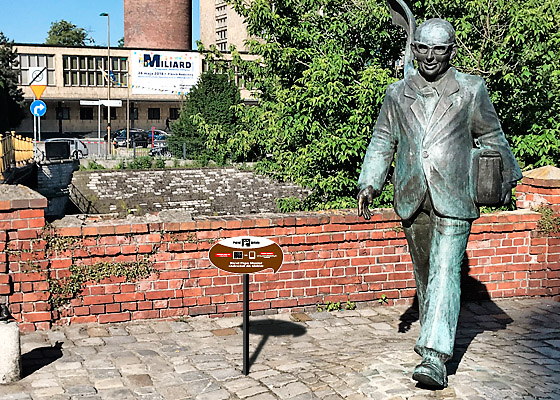
Po skierowaniu aparatu smartfona na kod QR znajdujący się w prawej części tabliczki na aparacie pojawi się ekran powitalny aplikacji, a następnie ekran z nazwą, zdjęciem pomnika i przyciskiem „START”.

Przycisk „START” uruchamia proces odtwarzania minisłuchowiska.
Następne kroki podpowie nam smartfon po wysłuchaniu historii lub przerwaniu jej odtwarzania. Prosimy o obserwowanie ekranu smartfona!

Inne dostępne opcje: krótka informacja o pomniku, autorze tekstu oraz nagrania, wykaz innych pomników w mieście objętych projektem "poznaj historię", mapka pomników do pobrania, film oraz linki do mediów społecznościowych.
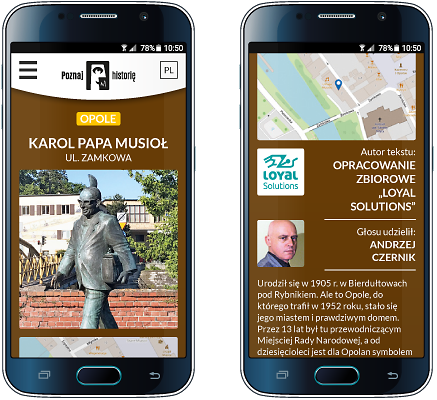
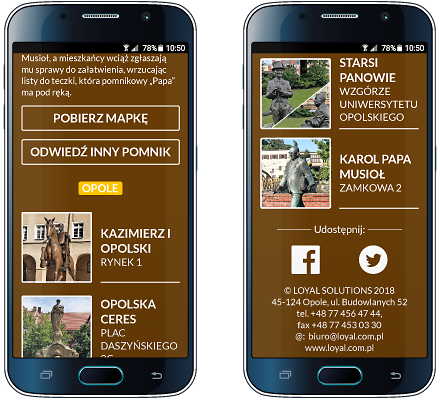
Chciałbyś wdrożyć projekt również w swoim mieście?
ContactZobacz galerię
Pomniki w mieście przypominają nam historię miejsc, ludzi, nawiązują do ważnych wydarzeń. To także dzieła pracy artystów. Brąz, metal, drewno czy beton zamienione w formę pomnikowego obelisku skupiają uwagę. Lubimy przy nich siadywać, fotografować się, umawiać.
Poniżej pokazujemy Państwu, jak reagują osoby słuchające opowieści niemych zazwyczaj pomników. Jak się uśmiechają, zamyślają, czasem dziwią albo bawią…
Partnerzy projektu
Realizacja projektu „Poznaj historię” w każdym z miast wymaga zaangażowania wielu ludzi: programistów, grafików, autorów tekstów, aktorów, realizatorów dźwięku czy osób koordynujących całe przedsięwzięcie. To dzięki nim powstał te projekt.
Naszą ambicją jest, aby jego zasięg stale się rozszerzał. Dlatego dziękujemy obecnym partnerom i zapraszamy kolejne miasta, instytucje oraz firmy i osoby prywatne do współpracy!
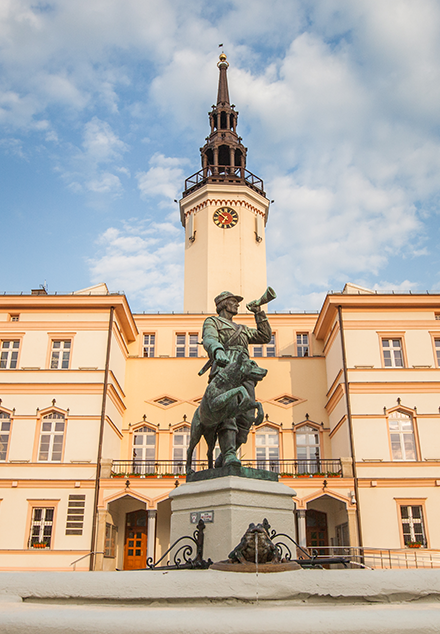
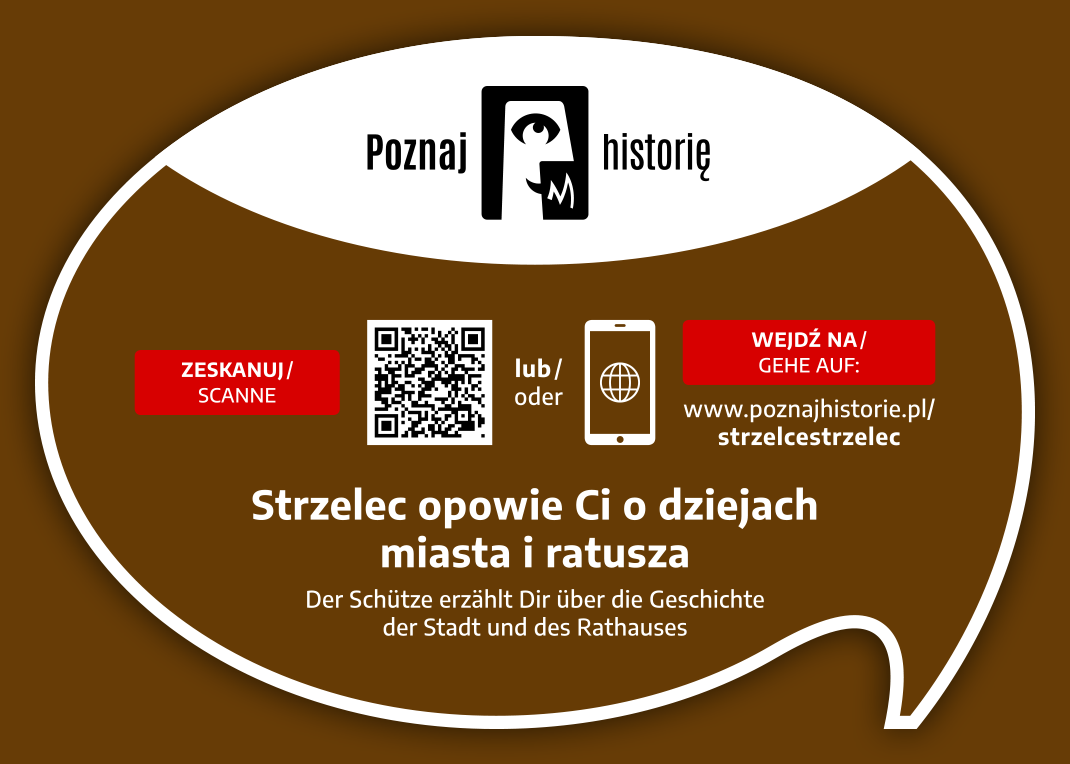


Visit Social media:
Share Social media: